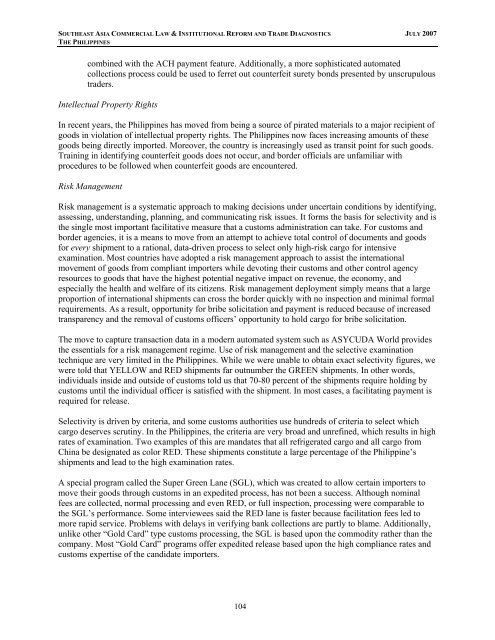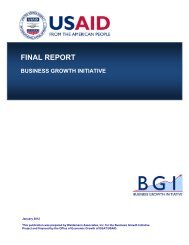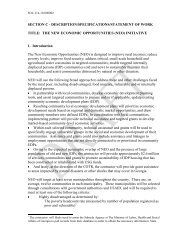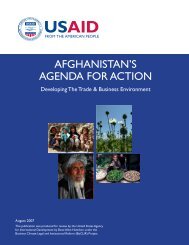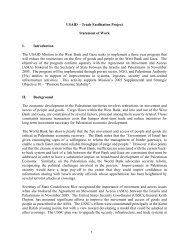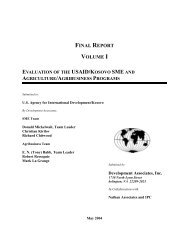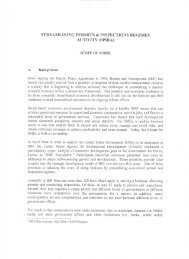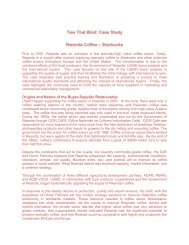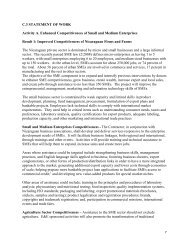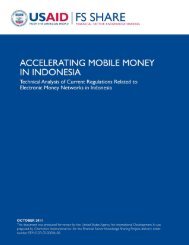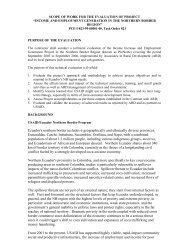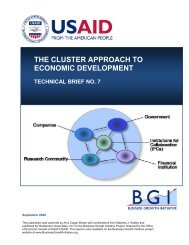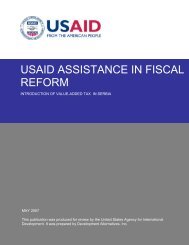The Philippines - Economic Growth - usaid
The Philippines - Economic Growth - usaid
The Philippines - Economic Growth - usaid
Create successful ePaper yourself
Turn your PDF publications into a flip-book with our unique Google optimized e-Paper software.
SOUTHEAST ASIA COMMERCIAL LAW & INSTITUTIONAL REFORM AND TRADE DIAGNOSTICS JULY 2007<br />
THE PHILIPPINES<br />
combined with the ACH payment feature. Additionally, a more sophisticated automated<br />
collections process could be used to ferret out counterfeit surety bonds presented by unscrupulous<br />
traders.<br />
Intellectual Property Rights<br />
In recent years, the <strong>Philippines</strong> has moved from being a source of pirated materials to a major recipient of<br />
goods in violation of intellectual property rights. <strong>The</strong> <strong>Philippines</strong> now faces increasing amounts of these<br />
goods being directly imported. Moreover, the country is increasingly used as transit point for such goods.<br />
Training in identifying counterfeit goods does not occur, and border officials are unfamiliar with<br />
procedures to be followed when counterfeit goods are encountered.<br />
Risk Management<br />
Risk management is a systematic approach to making decisions under uncertain conditions by identifying,<br />
assessing, understanding, planning, and communicating risk issues. It forms the basis for selectivity and is<br />
the single most important facilitative measure that a customs administration can take. For customs and<br />
border agencies, it is a means to move from an attempt to achieve total control of documents and goods<br />
for every shipment to a rational, data-driven process to select only high-risk cargo for intensive<br />
examination. Most countries have adopted a risk management approach to assist the international<br />
movement of goods from compliant importers while devoting their customs and other control agency<br />
resources to goods that have the highest potential negative impact on revenue, the economy, and<br />
especially the health and welfare of its citizens. Risk management deployment simply means that a large<br />
proportion of international shipments can cross the border quickly with no inspection and minimal formal<br />
requirements. As a result, opportunity for bribe solicitation and payment is reduced because of increased<br />
transparency and the removal of customs officers’ opportunity to hold cargo for bribe solicitation.<br />
<strong>The</strong> move to capture transaction data in a modern automated system such as ASYCUDA World provides<br />
the essentials for a risk management regime. Use of risk management and the selective examination<br />
technique are very limited in the <strong>Philippines</strong>. While we were unable to obtain exact selectivity figures, we<br />
were told that YELLOW and RED shipments far outnumber the GREEN shipments. In other words,<br />
individuals inside and outside of customs told us that 70-80 percent of the shipments require holding by<br />
customs until the individual officer is satisfied with the shipment. In most cases, a facilitating payment is<br />
required for release.<br />
Selectivity is driven by criteria, and some customs authorities use hundreds of criteria to select which<br />
cargo deserves scrutiny. In the <strong>Philippines</strong>, the criteria are very broad and unrefined, which results in high<br />
rates of examination. Two examples of this are mandates that all refrigerated cargo and all cargo from<br />
China be designated as color RED. <strong>The</strong>se shipments constitute a large percentage of the Philippine’s<br />
shipments and lead to the high examination rates.<br />
A special program called the Super Green Lane (SGL), which was created to allow certain importers to<br />
move their goods through customs in an expedited process, has not been a success. Although nominal<br />
fees are collected, normal processing and even RED, or full inspection, processing were comparable to<br />
the SGL’s performance. Some interviewees said the RED lane is faster because facilitation fees led to<br />
more rapid service. Problems with delays in verifying bank collections are partly to blame. Additionally,<br />
unlike other “Gold Card” type customs processing, the SGL is based upon the commodity rather than the<br />
company. Most “Gold Card” programs offer expedited release based upon the high compliance rates and<br />
customs expertise of the candidate importers.<br />
104


